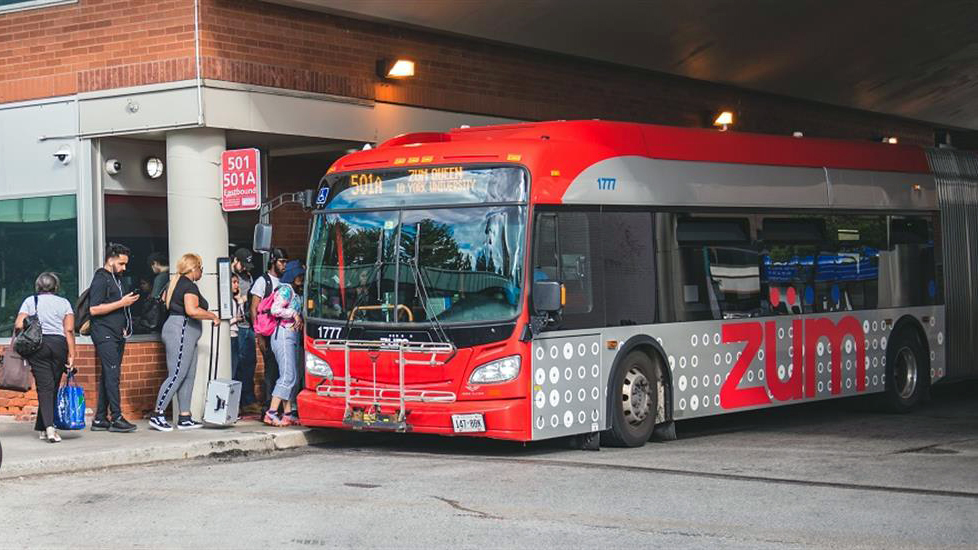Study finds Toronto pedestrian, cyclist injuries majorly under-reported
Posted January 15, 2024 7:48 pm.
A new study out of York University has found a large number of injured pedestrians and cyclists in Toronto aren’t being reflected in major traffic datasets.
The study, published in the journal Injury Prevention and co-led by the Institute for Clinic Evaluative Sciences (ICES), looked at local hospital data between 2016 and 2021, and Toronto Police Service traffic data.
“We found that there were approximately 30,000 total cyclist emergency department visits over five years,” Alison Macpherson, a professor at York University’s school of kinesiology and health science, told CityNews on Monday.
“That’s a high number for sure. I think what was the biggest surprise to us was that 80 per cent of those emergency department visits were from cyclist injuries not involving a motor vehicle, and we expected that proportion to be somewhat higher.”
Macpherson said around 2,300 of those cyclists had to be admitted to a hospital.
When it comes to pedestrians, there were approximately 9,700 emergency department visits by pedestrians.
While 54 per cent of the incidents involving pedestrians were reflected in Toronto Police Service data, Macpherson said just 7.9 per cent of cyclists were captured in the same dataset.
“We didn’t expect that they would … the police don’t respond to everything, that’s not their job,” she said, referencing if all the occurrences would be logged in the data.
As for why all of those injuries happened, Macpherson and the study team don’t fully know. She said they didn’t receive deeper information on how, where or why the cyclists and pedestrians were injured. The varying injury severity levels and the diagnoses the patients received also weren’t known.
Macpherson said by looking at the different types of data together, there can be a fuller understanding of the issues at play.
“What we would really ideally like to see some linkage between police data and hospital data because the police data has … the context, the location, whereas hospitalization data focuses on the individual that was injured and of course because that’s the reason those data are collected.
“If we can merge those, we can get a great picture of cyclist and pedestrian injuries and then continue steps to prevent them.”
Macpherson said further study and additional data is needed to come up with stronger recommendations. The level of injuries being experienced also reinforced ongoing calls from advocates for greater safety improvements.
“Cycling is a safe and sustainable way to get around the city,” she said while praising investments in dedicated cycling lanes by the City of Toronto.
“Previous studies that we’ve done show that the safest place for bicyclists to ride is on a pathway separated from motor vehicles, so I’m not saying that cycling is unsafe — that’s not true at all — but I think if we want to make it safer, we need to look at the infrastructure both on roads and off roads that makes it safer for cyclists.”
Toronto police report year-over-year increase in pedestrian deaths
The Toronto Police Service traffic services unit reported an increase in the number of pedestrian deaths at the end of 2023.
Const. Sean Shapiro told CityNews there were 29 pedestrian fatalities last year while there were 22 deaths in 2022 and 26 deaths in 2021. In addition to the 29 fatalities, 10 vehicle occupants, five motorcyclists and a cyclist also died on Toronto roads.
“Zero deaths is the only acceptable number and it’s achievable when people are doing the right thing. Sadly, we have a lot of people doing the wrong thing,” he said, noting the biggest problem remains speeding by vehicle drivers.
“We want people to follow the rules of the road. They’re really basic and they’re to be followed. Many people are taking speed as a general suggestion as opposed to something that they actually have to adhere to.
“A lot of people think they’re great drivers, it’s everybody else that’s a problem, and they don’t realize that they’re part of the issue until it becomes something they’re directly involved in.”
Shapiro said the service is working at boosting its traffic and road safety education efforts in addition to enforcement to crack down on other major issues by motorists such as impaired and distracted driving.








